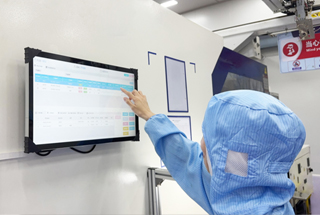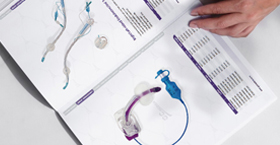A Foley catheter with urometer is a specialized indwelling urinary catheter designed to provide continuous bladder drainage while offering precise measurement of urine output at the bedside. The device consists of a soft, flexible tube (the catheter) that is inserted through the urethra into the bladder; this tube has two lumens—one for bladder drainage and one to inflate a retention balloon. Integrated alongside the drainage lumen is a urometer chamber calibrated in milliliters, enabling clinicians and caregivers to monitor urine volume in real time without the need for bulky external collection bags or additional measuring devices.
Clinically, the Foley catheter with urometer is most commonly used in surgical, intensive care, and acute care settings where accurate hourly urine output is critical for assessing renal function, fluid balance, and hemodynamic stability. The urometer’s graduated scale typically ranges from 0 to 1000 mL, marked at 10 mL increments, and is constructed from transparent, medical-grade materials to facilitate clear visualization. When the urometer reaches capacity, excess urine is automatically diverted to a secondary collection bag, ensuring uninterrupted drainage and reducing the risk of backflow or leakage.
Key advantages of an all-in-one Foley catheter with urometer include simplified workflow, reduced risk of contamination, and increased patient mobility compared to traditional systems that require separate urine meters and collection bags. The compact urometer chamber can be easily detached and emptied for recording, then reattached without interrupting drainage. Additionally, the device often features a smooth, atraumatic tip and hydrophilic coating to minimize urethral irritation during insertion and indwelling use.
For optimal performance, proper insertion technique, securement, and regular inspection of the system are essential. Healthcare providers should ensure the urometer is positioned below bladder level to maintain gravity drainage, and clamps should be checked for patency. Emptying intervals should be determined based on patient condition and output volume; typically, the urometer is drained once it reaches 75–100 mL to avoid overflow into the secondary bag. Routine catheter care protocols—including perineal hygiene and assessment for signs of infection—apply equally to this integrated system.
| Specification | Details |
|---|---|
| Catheter Type | Two-way Foley (drainage lumen + balloon lumen) |
| Urometer Capacity | 0–1000 mL, graduated in 10 mL increments |
| Material | Medical-grade PVC or silicone; transparent chamber |
| Balloon Volume | 5–30 mL sterile water (varies by catheter size) |
| Tip Style | Atraumatic, rounded “J” or standard rounded tip |
| Coating | Hydrophilic or siliconized surface |
| Connection | Luer lock connectors for irrigation and balloon port |
| Secondary Bag | 2000 mL capacity, anti-reflux valve |
| Sizes | 12–24 Fr (French gauge) |
| Indications | Hourly output monitoring, postoperative care, ICU |
| Drainage Positioning | Below bladder level; secure to inner thigh |
| Emptying Protocol | Drain when urometer ≥75 mL; record volume; reattach |
| Infection Control | Closed system; routine perineal cleaning |
This integrated Foley catheter with urometer system streamlines urine output monitoring and enhances patient comfort by combining drainage and measurement in a single, easy-to-manage device. Regular maintenance and adherence to catheter care guidelines will help maximize safety and functionality.
| Urine Drainage Bags > |


 Français
Français Español
Español Products
Products

 About Us
About Us












